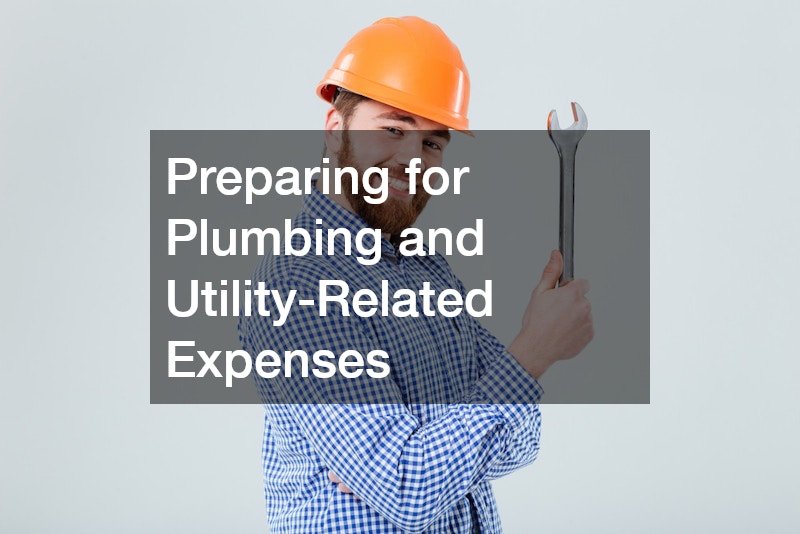Home improvement projects can be exciting opportunities to make your space more functional, efficient, and beautiful, but they also require careful financial planning. Without a solid budget, it’s easy to underestimate costs or overspend on upgrades that could have been done more strategically. Budgeting effectively allows you to balance immediate needs with long-term goals while maintaining control of your finances throughout the process. From necessary safety upgrades to aesthetic improvements, knowing how to allocate funds wisely ensures that every dollar spent adds measurable value to your home. Taking time to understand the full scope of potential expenses—from labor and materials to permits and unexpected repairs—can make the difference between a stressful renovation and a smooth, successful project.
Assessing the Scope of Your Home Improvement Goals
Before creating a home improvement budget, it’s essential to define the scope of your projects. Start by identifying which updates are essential for safety or function and which are primarily aesthetic. Breaking down your goals into categories—such as structural repairs, energy efficiency, or design upgrades—helps prioritize spending and set realistic timelines. This approach prevents you from spreading your budget too thin across multiple areas and ensures that you’re addressing the most important needs first. Understanding your priorities also allows you to explore financing options and compare estimates with a clearer perspective.
When planning your budget, consider whether any emergency or restorative work is necessary, such as hiring a fire restoration service to address property damage. Unexpected events like fires, floods, or storms can significantly impact both your budget and timeline. Restoration specialists can assess damage, repair affected areas, and help restore your home safely and efficiently. Including such potential expenses in your overall budget ensures that you’re prepared for emergencies and reduces the likelihood of financial strain. Accounting for major repairs early on gives you a more accurate picture of your total costs and helps safeguard your investment in your home.
Accounting for Safety and Compliance Costs
Home improvement isn’t just about aesthetics—it’s also about ensuring that your property meets safety standards and regulations. Projects like remodeling older homes may require special attention to materials, especially if your property was built decades ago. Compliance with local building codes and environmental safety laws can add unexpected costs, but these expenses are crucial for protecting your health and maintaining your home’s value. Investing in safety upgrades not only gives you peace of mind but also prevents larger problems and potential fines down the road.
If you live in an older home, allocating funds for lead removal is a smart and sometimes necessary precaution. Lead-based paint or pipes can pose serious health risks, especially to children and pets, and must be handled by certified professionals. Including these safety measures in your home improvement budget ensures that any updates you make are done responsibly and in compliance with regulations. Professionals can safely remove hazardous materials and replace them with safer, modern alternatives, helping you create a healthier living environment. Factoring in these costs early on allows you to complete your renovations without unexpected financial setbacks or safety concerns.
Including Comfort and Seasonal Upgrades in Your Plan
When planning a home improvement budget, it’s important to think beyond structural or cosmetic changes and consider upgrades that improve year-round comfort. Seasonal projects, such as heating, cooling, or pool enhancements, may seem optional but can greatly increase your home’s livability and value. These improvements often lead to energy savings and a more enjoyable living environment. Setting aside funds for these upgrades ensures that you can make timely improvements when needed instead of waiting until systems fail or seasons change.
Adding pool heater installation to your budget can be a great way to extend your swimming season and enhance your outdoor living space. A pool heater allows you to enjoy your pool comfortably during cooler months, maximizing your investment in your backyard. Professionals can recommend energy-efficient models that fit your pool’s size and your climate, helping you balance performance with cost savings. Planning ahead for this installation allows you to include both equipment and ongoing maintenance expenses in your budget, ensuring your pool remains a year-round source of relaxation and recreation.
Prioritizing Energy Efficiency and Long-Term Savings
Energy-efficient upgrades are among the most valuable home improvements you can make. They reduce utility costs, increase comfort, and enhance your property’s appeal to future buyers. When budgeting, it’s wise to view energy-efficient improvements not as expenses but as investments that yield long-term returns. Improvements such as insulation, window upgrades, or modern heating and cooling systems can significantly lower your monthly bills. Including these updates in your budget ensures that your home operates efficiently while reducing your environmental footprint.
Consulting with a qualified HVAC contractor can help you prioritize which energy-saving projects will provide the best value for your home. These professionals can assess your current system, recommend upgrades like energy-efficient furnaces or air conditioning units, and install modern thermostats that optimize temperature control. By working with an HVAC expert, you’ll not only improve comfort but also reduce energy waste and long-term repair costs. Budgeting for these upgrades now means you’ll enjoy both immediate and future savings while increasing your home’s overall performance.
Factoring in Waste Removal and Cleanup Expenses
Home improvement projects often create more waste than homeowners expect. Whether you’re remodeling a bathroom, replacing flooring, or upgrading your kitchen, you’ll likely need a plan for debris removal. Failing to account for waste management in your budget can lead to unexpected costs and delays. Including cleanup expenses ensures that your property stays safe and organized throughout the renovation process. This step is especially important for larger projects that involve demolition or multiple contractors working on-site.
Securing a dumpster rental is an efficient and affordable way to handle construction waste and unwanted materials. Dumpster rentals come in various sizes to fit your project’s scale and duration, allowing for easy disposal of debris without repeated trips to the landfill. Professionals deliver and pick up the container at your convenience, saving you time and hassle. Including this service in your budget helps keep your project on track and ensures a cleaner, safer workspace. Planning for waste management early on prevents hidden expenses and simplifies the cleanup process once your renovation is complete.
Understanding Additional Fees and Short-Term Rentals
One of the most overlooked parts of a renovation budget is the cost of additional or temporary services that support the main project. These can include short-term rentals, extra tools, or secondary cleanup options that arise once work begins. Small expenses like these can quickly add up if they aren’t accounted for early in your planning. Setting aside a portion of your budget for these extra needs helps you stay prepared for logistical costs that make the renovation process smoother and more efficient.
Including dumpster services as part of your project plan is an excellent example of anticipating these extra expenses. Beyond the initial rental, you may need multiple pickups or extended rental periods depending on your project’s size. Professional dumpster services can help schedule timely waste collection, ensuring that debris doesn’t pile up and delay progress. They can also assist with recycling or proper disposal of materials, saving you potential fines for improper waste handling. Factoring in these service costs upfront allows your renovation to proceed without unnecessary disruptions or surprise fees.
Preparing for Plumbing and Utility-Related Expenses
Plumbing-related improvements often become unavoidable during renovations, especially when working on bathrooms, kitchens, or basements. Even if you don’t plan to replace major fixtures, hidden issues like leaks, corroded pipes, or outdated systems can surface once construction begins. Because plumbing plays such a vital role in your home’s comfort and safety, it’s important to dedicate a realistic portion of your budget to potential repairs or upgrades. Ignoring these systems can lead to future water damage or costly emergencies.
Partnering with an experienced plumbing contractor ensures that your home’s water systems are functioning properly and efficiently. These professionals can inspect your plumbing network, identify areas that need attention, and recommend solutions that fit your budget. Whether it’s installing new pipes, updating fixtures, or repairing leaks, plumbing contractors handle both preventive maintenance and urgent issues. Including this work in your budget gives you flexibility to address unforeseen complications, ensuring that your renovation is both durable and compliant with plumbing codes.
Setting Aside Funds for Unexpected Repairs and Security
Even the most well-planned home improvement projects can encounter surprises once the work begins. Hidden damage, outdated wiring, or structural issues may surface during demolition or inspection, requiring additional funds to fix. Building a contingency fund—typically around 10 to 20 percent of your total budget—ensures that you can handle these surprises without derailing your entire plan. It’s also important to consider security upgrades that protect your property while work is being done, particularly if contractors are accessing your home frequently.
Hiring a professional locksmith service can be a smart step during or after major renovations. Locksmiths can rekey locks, install upgraded systems, or add security features that protect new doors, windows, and entry points. This is especially important if your renovation involves new contractors, deliveries, or temporary access points. Budgeting for locksmith services not only enhances your home’s safety but also provides peace of mind once your project is complete. By planning for both emergencies and security, you create a more flexible and secure renovation strategy.
Budgeting for Aesthetic and Functional Finishing Touches
After major improvements are completed, finishing touches bring everything together and transform your house into a cohesive, comfortable space. These elements often include lighting, fixtures, flooring, or window treatments—details that make your home feel polished and complete. However, many homeowners underestimate how much these aesthetic and functional upgrades can cost. Setting aside part of your budget for final enhancements ensures you can finish the project without cutting corners or leaving areas incomplete. These smaller details also add measurable value and personality to your home, making it more inviting and appealing.
Incorporating blind installation into your final renovation budget is a perfect example of a finishing touch that balances style and practicality. Professionally installed blinds improve energy efficiency by managing natural light and insulation, while also enhancing privacy and interior design. With many materials and colors available, blinds can complement any décor and tie together the overall look of your renovated space. Expert installers ensure a precise fit and smooth operation, which adds to the functionality and long-term quality of your window treatments. Planning for this upgrade ahead of time prevents last-minute overspending and helps your home look its best once the renovation is complete.
Planning for Ongoing Maintenance and Pest Prevention
Once your home improvements are complete, ongoing maintenance becomes an essential part of protecting your investment. Regular upkeep keeps your new systems, finishes, and appliances in good condition and prevents costly repairs in the future. In addition to routine cleaning and inspections, it’s important to budget for professional services that keep your home safe from natural wear or external threats. Pest prevention, in particular, is often overlooked but can save homeowners thousands of dollars in damage over time.
Including bee control in your long-term home maintenance plan helps protect your property from unwanted infestations that could damage structures or pose safety risks. Professional bee removal and prevention specialists can safely relocate hives, seal entry points, and provide recommendations for keeping your home pest-free. Budgeting for these services ensures that your home remains safe, clean, and well-maintained year after year. Preventive care like this preserves the results of your renovation and contributes to the long-term health and comfort of your home.
Creating a well-structured budget for home improvements is about more than managing expenses—it’s about building a plan that supports comfort, safety, and lasting value. By identifying priorities early and setting aside funds for both expected and unexpected costs, homeowners can approach renovations with confidence and control. Whether it’s restoring damaged areas, improving energy efficiency, or enhancing your home’s appearance, every improvement becomes more successful when guided by careful financial planning.
Incorporating specialized services like plumbing, waste removal, and safety upgrades ensures that your project runs smoothly from start to finish. Meanwhile, planning for finishing details and ongoing maintenance keeps your investment protected long after the renovation is complete. A thoughtful, flexible budget allows you to balance affordability with quality, helping you achieve the home you envision without unnecessary stress. With proper preparation and professional support, every improvement you make contributes to a safer, more efficient, and more valuable home.








